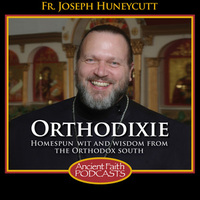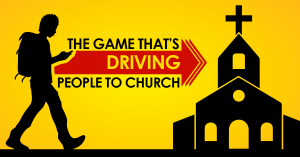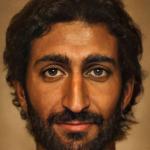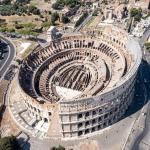by Aidan Nichols OP
Part 3
I come now to the third part of my paper which concerns the present state of Catholic-Orthodox relations. After a preparatory phase of initial contacts known as the ‘dialogue of charity’, the Catholic-Orthodox theological dialogue was officially established in 1979, with the ‘common declaration’ made by the Ecumenical Patriarch Dimitrios 1 and Pope John Paul II at the conclusion of the latter’s visit to the Phanar, the patriarchal seat in Istanbul, in November of that year.
At that juncture the situation between Orthodox and Catholics was from one point of view more hopeful than at, say, the time of the Council of Florence, but from another viewpoint it was less hopeful. It was more hopeful in that the participation of the Orthodox in the Ecumenical Movement from the 1920’s onwards had accustomed them to the idea of work for Christian unity – though a strong and vociferous minority have always expressed reservations about this policy as likely to confirm what Catholics would call ‘indifferentism’.
If at its origins the Ecumenical Movement was largely a pan-Protestant conception, the entry of the Orthodox into its ranks pressed that Movement, nonetheless, in a direction which made it possible for the Catholic Church to join it, nearly forty years later, on the eve of the Second Vatican Council. The Orthodox had this salutary effect in that their voices – combined with those of neo-patristically minded Anglicans (a species more common then than now) – succeeded in dispelling the sense that ecumenism was basically a movement preparing a purely moral and sentimental – rather than doctrinal and sacramental – union of Christians.
Along these broad lines, then, the Orthodox churches had functioned highly constructively within the Ecumenical Movement up to the 1980’s, though whether they can continue to do so in the context of the World Council of Churches in the future – given the capture of the latter by a largely secular agenda – remains to be seen.
To this glowing account of Orthodox ecumenism one important caveat must be appended. It is possible to overrate the theological component of the role of Orthodoxy in the twentieth century Ecumenical Movement by overlooking the fact that the desire of many Orthodox for greater contest with Western communions was in part a pragmatic and even political one.
With the collapse of the Russian Tsardom in 1917, that mighty protector of the Orthodox churches was no more, and Orthodox communities in hostile States like Bolshevik Russia or Kemalist Turkey, or in comparatively weak confessionally Orthodox States such as Bulgaria and Greece, needed the support of a still surviving Christian political conscience in such great Powers of the first half of this century as Britain and the United States. This realistic caution about the motives of some Orthodox ecumenism brings me to the less hopeful features of the situation which surrounded the opening of official dialogue at the beginning of the 1980’s.
In the more than five hundred years since the collapse of the Florentine Union, Orthodox and Catholics had had time to practise yet more polemics against each other, to coarsen their images of each other, and also to add (especially from the Orthodox side) new bones of doctrinal contention though in one case, the definition in 1870 of the universal jurisdiction and doctrinal infallibility of the Roman bishop, the dismay of the Orthodox was of course entirely predictable, as was pointed out by several Oriental Catholic bishops at the First Vatican Council.
We find for instance such influential Orthodox thinkers as the Greek lay theologian John Romanides attacking the Western doctrine of original sin as heretical, thus rendering the Latin Marian dogma of the Immaculate Conception – Mary’s original righteousness – superfluous if not nonsensical. Or again, and this would be a point that exercised those responsible for the official dialogue of the last fifteen years, some Orthodox now wished to regard the pastoral practice whereby many local churches in the Latin West delay the confirmation (or chrismation) of children till after their first Holy Communion as based on a gravely erroneous misjudgment in sacramental doctrine.
None of this, however, prevented the Joint International Commission for Theological Dialogue between the Roman Catholic Church and the Orthodox Church – to give it its mouthful of a title – from producing several (three, to be precise) very useful documents on the shared understanding (in the Great Church of which Orthodoxy and Catholicism are the two expressions) of the mystery of the Church herself, in her sacramental and especially eucharistic structure, seen in relation to the mystery of the triune God, the foundational reality of our faith. These statements are known by their place and date of origin: Munich 1982, Bari 1987, and Valamo (Finland) 1988.
The shadow cast more recently was in 1979 only a cloud on the horizon, a cloud, as in Elijah’s dealings with Ahab in the First Book of Kings, no bigger than a man’s hand. And this is the threat posed to the dialogue by the re-invigoration of hitherto communist-suppressed Uniate or Eastern Catholic churches, notably those of the Ukraine and Transylvania, in the course of the later 1980’s and 1990’s.
The existence of Byzantine-rite communities in union with the Holy See was already a major irritant to the Orthodox, even though some of these communities, for instance in Southern Italy and Sicily, had enjoyed an unbroken existence and were in no sense the result of prosyletism or political chicanery.
What the Orthodox quite naturally and rightly object to is Uniatism as a method of detaching Orthodox dioceses and parishes from their mother churches on a principle of divide et impera. Not all partial unions with the Byzantine Orthodox can be brought historically under this heading, for some, such as that with a portion of the Antiochene patriarchate which produced the present Melkite church, are principally the result of Eastern, not Western, initiative.
But that the pope (John Paul II) who presided over the beginnings of Catholic- Orthodox dialogue should also be a pope who played a major role in the destruction of Communism has certainly proved to be one of the ironies of Church history. The passing of Marxist-Leninist hegemony, the internal disintegration of the Soviet Union, the copycat rebellions against a Nationalist Communist nomenklatura in such countries as Rumania, made possible the re-emergence of Oriental Catholic churches once forcibly re-united with the Orthodox by Stalin’s Comintern in the aftermath of World War II. The process has been sufficient to place in jeopardy the project of Catholic-Orthodox reunion which is the one goal of ecclesiastical as distinct from merely public policy most dear to the heart of this extraordinary Slav bishop of Rome.
Thus in June 1990 at the plenary meeting of the Commission at Freising in Bavaria, the Orthodox refused to continue with the official agenda in discussing ‘Conciliarity and Authority: the Ecclesiological and Canonical Consequences of the Sacramental Stricture of the Church’ until a document could be agreed on the Byzantine-rite Catholic churches, a document actually produced at Balamand in the Lebanon in 1993 and which has, regrettably, failed to satisfy many Orthodox whilst angering many Oriental Catholics.
To be continued …











